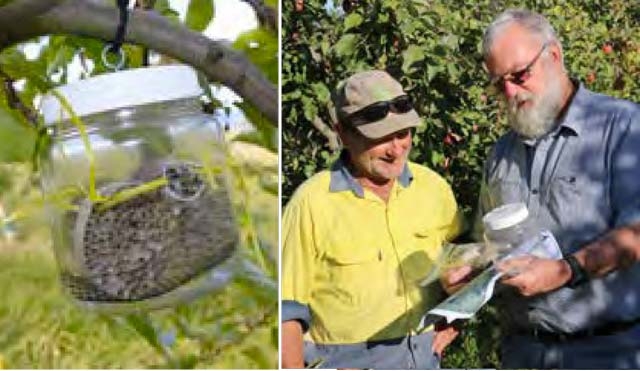Codling moth is the most serious pest of pome fruit worldwide and the most damaging pest of commercial apple, pear, quince and nashi orchards in Australia.
A new biocontrol agent (Continued from last issue)
A wasp called Mastrus ridens targets codling moth. It has been introduced into Australia.
The wasps were confined in quarantine until approval was granted to release them into orchards (after five years of host-specificity testing).
The first release was into an organic orchard in the Goulburn Valley in 2014 to establish a nursery site and to provide a field site in which establishment issues such as dispersal, predation and hyper-parasitism could be studied.
Since then, the research team has been releasing Mastrus into sites in Queensland, New South Wales, South Australia, Tasmania and Southern Victoria.
The team has also been investigating the effects on wasp survival of commonly used orchard pesticides.
Mastrus ridens seeks out hibernating codling moth caterpillars and lays eggs in the cocoon. When the wasp eggs hatch, the wasp larvae feed on the codling moth caterpillars.
Codling moth larvae consumed by Mastrus are easily distinguished from those that have been consumed by predators because in the latter case there are generally only scattered remains.
The research team confirmed parasitism by Mastrus, but there was also considerable predation by earwigs and ants. An added bonus was detection of another wasp, suspected to be Gotra pomonellae, which was also attacking codling moth pupae.
Release of Mastrus in orchards
To release Mastrus in orchards, parasitised codling moth larvae in corrugated cardboard bands are chilled and transported in portable coolers. The parasitised larvae are transferred into modified fruit fly traps which are then suspended from lower limbs of fruit trees (Figure 1). These are left until the adult wasps emerge and disperse.
The location of release sites is recorded for future reference.
Between 8000 and 20,000 Mastrus were released at each site and Mastrus adults were seen searching the trees for codling moth larvae about seven days after release.
Mass trapping (cont next issue)
See this article in Tree Fruit Feb 2019




















